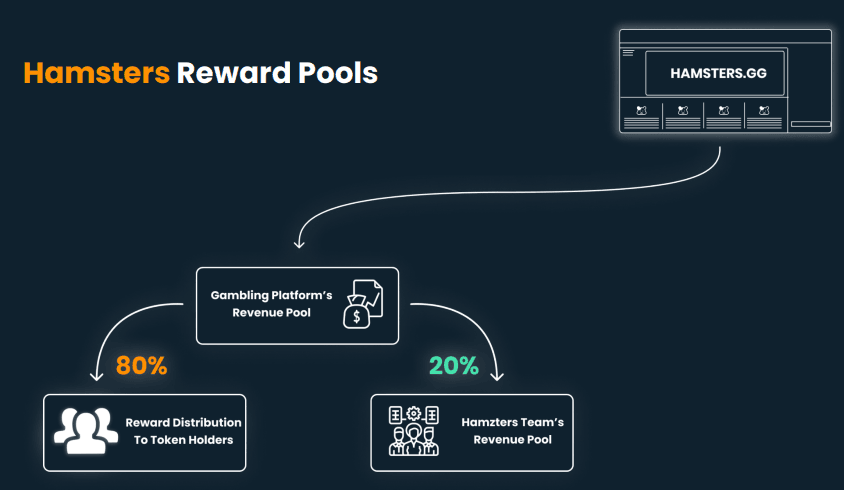Greetings, Crypto Adventurers! Buckle up for this week’s thrilling ride through the energetic universe of blockchain, where fortunes are made, rules are rewritten, and even hamsters are becoming heroes. Here’s what our journey has in store:
- Market Madness: Celebrate Bitcoin, Ethereum, and XRP’s moonwalk and the Wall Street shuffle that led to a surprise surge. From Bitcoin’s touch-and-go with the $31,000 range to XRP’s court-induced rally
- Ethereum’s Elegant Upgrade: Explore Ethereum’s potentially game-changing account abstraction upgrade. With “signless transactions” and reduced fees, get ready for a revolution, if the hurdles can be overcome.
- Regulatory Rodeo: Navigate the cryptic labyrinth of US crypto regulation proposals, and witness the ‘Financial Innovation and Technology for the 21st Century Act’ galloping into action.
- FTX Tango: Dive into the dizzying legal battle between FTX Trading and its founder, Sam Bankman-Fried. Get ready for courtroom drama, billion-dollar allegations, and potential fraud revelations.
- Hamsters.gg: Chuckle at the latest crypto craze – betting on live hamster races, token rewards, and a thriving social community.
Don’t blink, or you might miss a beat in this exhilarating week of crypto chaos and innovation!

A Tale of Surges, Seismic Shifts, and the ‘Super Elegant’ Game-Changer
Pop the corks, fellow cryptonauts!
Bitcoin, Ethereum, XRP, and the rest of the crypto-gang have been doing the moonwalk, thanks to our good ol’ pals at BlackRock leading a surprise Wall Street boogie. But hold onto your hats, because we’re just getting started!
Bitcoin had briefly touched the $31,000 range, pretty much double of what it was during its discount days in late 2022. Ripple’s XRP, meanwhile, has been training for the Olympics, nearly doubling its price in a week. Why, you ask? Because a judge somewhere decided that Secondary sales of XRP on crypto exchanges “did not constitute unregistered sales of investment contracts”, because a secondary market buyer “did not know to whom or what it was paying its money”. Unintentionally set off a juicy rally.
Last week, a rally has been revving up, spurred by Uncle Sam’s casual $15 trillion “whoopsie-daisy” in the bond market. Not to be left behind, Ethereum’s own Wizard of Oz, Vitalik Buterin, is teasing an upgrade that could “reduce costs by 100 times” That’s right, folks! Vitalik’s out here dropping bombs while we’re just trying to get our coffee machine to work.
At the Ethereum Community Conference in Paris, our wizard unveiled a plan for account abstraction. In layman’s terms, it’s like turning your grandpa’s old wallet into a savvy, new-age, smart contract-based wallet. Lost your private key seed phrase? Just reset it as easily as you reset your email password for the dozenth time.
According to Buterin, this upgrade is as “super elegant” as a blockchain ballet, reducing transaction fees and introducing “signless transactions.” Less money wasted, more money for Lambo fuel!
Furthermore, the wallet upgrade also promises the ability to receive various cryptocurrencies and pay network fees without having to convert it into Ethereum. Now, you won’t have to dump your precious altcoin stash just to keep the Ethereum engine humming.
However, this “super elegant” upgrade isn’t going to be a cakewalk. The dream of a billion Ethereum users is packed with a punch of potential pitfalls.
Our grand wizard Buterin knows it too. Transitioning Ethereum’s current accounts into smart contracts and making sure they gel with layer-2 solutions is like trying to teach an old blockchain new tricks. There’s also the matter of playing nice with biometrics and wallets – not exactly a walk in the crypto-park! Let alone the potential security risks that may come with the upgrade.
But hey, nobody said the road to revolution was smooth! Despite these speed bumps, Buterin’s still all grins about the progress. Think about it – efficient transactions, more frugal data usage, faster verification times. Sounds like Ethereum’s getting ready for a glow-up! Stay tuned, folks!
Crypto Regulatory Rodeo: A Tale of CFTC, SEC, and a Whole Lot of Bureaucracy
The crypto circus in Uncle Sam’s backyard just got more interesting. With America playing catch-up in the crypto rat race, lawmakers are churning out regulatory proposals faster than Dogecoin tweets from Elon.
The new kid on the block is the snappily titled ‘Financial Innovation and Technology for the 21st Century Act‘ submitted on July 20. Picture this as an invitation for a playdate between two federal behemoths, the CFTC and the SEC.
The main wranglers of this bill, House Committee hotshots Glenn Thompson and French Hill, promise a framework that will “protect consumers and keep innovation in the United States”. They’re adamant this law could have stopped FTX’s infamous billion-dollar customer fund heist.
This regulation rodeo isn’t just about catching the bad guys, though. It’s also about bringing crypto companies into the regulatory fold, clarifying digital asset definitions, and shaking up some ancient US securities laws. They’re even going as far as trying to put a regulatory finger on that slippery eel, “decentralization”
Echoing the sentiment, Representative Dusty Johnson noted, “The crypto industry wants clarity.” With both the CFTC and SEC getting a seat at the table, it’s bound to get interesting.
Even Coinbase’s chief legal officer, Paul Grewal, chimed in, “If we want to be taken seriously as a nation, we have to act seriously as a nation”.

FTX Trading’s Billion-Dollar Tango: Legal Battle Against Founder & Former Executives
In a staggering move, FTX Trading has launched a billion-dollar legal assault against its own founder, Sam Bankman-Fried, and a cohort of former top-brass executives. The crypto-trading titan alleges that this motley crew misappropriated a whopping $1 billion before the company filed for bankruptcy.
Reuters spilled the beans on Thursday about the high-stakes courtroom drama, naming former FTX engineering honcho Nishad Singh, ex-technology chief Zixiao “Gary” Wang, and Caroline Ellison, the brain behind hedge fund Alameda Research, as defendants. The legal clash is unfolding in a Delaware bankruptcy court.
FTX claims that Bankman-Fried and his gang consistently drained the company’s coffers to finance their lavish lifestyles and personal projects, leading to what the complaint dubs as one of the “largest financial frauds.”
The period between February 2020 and November 2022 reportedly saw fraudulent transfers north of $725 million. These transfers consisted of equity bestowed by FTX and West Realm Shires without any reciprocal value. In a jaw-dropping episode, Bankman-Fried and Ellison allegedly netted $546 million to buy Robinhood Markets stock, with Ellison treating herself to $28.8 million in bonuses.
FTX is adamant that these transactions are reversible under Delaware or US bankruptcy law given the fact that they were made knowingly when the entities were in the red.
But this isn’t FTX’s first tango with legal matters post-bankruptcy in November. The trading powerhouse has been embroiled in a slew of lawsuits, from suing the founders of Digital Assets AG for “massive overpayment” of $323.5 million, to filing a case against its European wing for misuse of funds.
And at the heart of it all, Caroline Ellison emerges as the potential star witness in Bankman-Fried’s upcoming criminal trial set for October 2. The ex-CEO of Alameda Research had previously expressed her remorse for participating in the alleged fraud and her testimonies might prove crucial in determining the fate of the case.
With a trial likely to span four to five weeks, focusing on Bankman-Fried’s conversations with cooperating witnesses on Signal, the stakes in this crypto courtroom drama couldn’t be higher.
Terraform labs joins the party
Adding onto this, remember the Terra Luna collapse? Well, Terraform Labs seeks to subpoena FTX and related entities as part of its defense against SEC allegations. The company wants to access wallets used by short sellers on FTX to trade UST and LUNA to argue that a “coordinated attack” caused the depeg of its stablecoin. FTX might have some information on whether it actually was a coordinated attack, and who may have been behind this.
Hamster Racing Bets on Blockchain Captivate Crypto Crowd
In search of new forms of returns as Bitcoin lingers in stagnation and the DeFi sector struggles to break free from its bear market lull, crypto traders are turning to an unlikely form of entertainment: betting on live hamster races via blockchain. The platform, called Hamsters.gg, is making waves in the crypto community.
Hamsters.gg operates by having real, live hamsters race against each other. The names of hamsters like “Sparky” and “Buster” are becoming popular among the betting community, and some races have seen bets of up to $500. A chatbox on the platform, complete with virtual beer and hotdog emojis, attracts over a thousand viewers, fostering a lively social aspect to the betting process.

This novel betting form emerges from the crypto community’s tendency to gravitate towards gambling platforms and meme coins, a trend that was exemplified with the surge in popularity of tokens like Dogecoin and Shiba Inu. Hamsters.gg, which started live streaming races via Twitch earlier in July, accepts bets in Binance USD (BUSD), a stablecoin pegged to the U.S. dollar. Users can deposit their BUSD tokens from either the Ethereum or BNB Chain.
Adding to the intrigue, Hamsters.gg has introduced its own token, HAMS. Besides a 5% buy and sell tax for the token, the platform takes a 5% fee from each winning bet, and 80% of this is shared amongst HAMS token holders, creating an incentivized ecosystem within the platform. HAMS, based on the Ethereum blockchain, rapidly achieved a capitalization of over $13 million, with its price skyrocketing to $3 per token, that’s a juicy 20x from July 20th.
A Uniswap liquidity pool for HAMS holds $800,000 worth of $ETH and $HAMS and has seen $8 million in trading volumes over the past day. The developers of Hamsters.gg have announced that they are dedicated to the project’s long-term development and scalability.
According to the whitepaper, the token “offers a host of utilities that enhance the user experience, drive platform growth and faster innovation”, but what this exactly means remains vague.
All betting revenues will be split amongst token holders in an 80/20 ratio.

Breakdown of the revenue distribution model
Fun and cute as it seems, we have to bear in mind that the token value will depend on the team keeping the hamster races functional, popularity of hamster betting, and whether or not PETA comes knocking on the door.
In Conclusion: Turmoil and Novelty in the Crypto World
Today’s developments in the crypto sphere highlight the industry’s vibrancy and volatility. FTX Trading’s legal wrangling with its founder, Sam Bankman-Fried, underscores the need for robust regulatory mechanisms and transparency in the high-stakes world of digital assets. Meanwhile, Terraform Labs’ bid to subpoena FTX illustrates blockchain’s potential to bring about verifiable fairness.
On a lighter note, the debut of hamster racing on blockchain reflects the limitless innovation in the sector, reinventing entertainment with a playful blend of technology and gambling. As intriguing as it may be, it also provokes questions on the line between amusement and unregulated betting.
These tales of litigation, transparency issues, and innovation are a reminder of the multifaceted, unpredictable nature of the crypto industry, reinforcing the importance of regulation, ethics, and responsible innovation in this dynamic domain. Stay safe folks!



